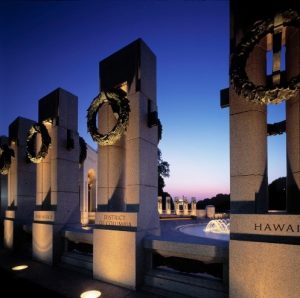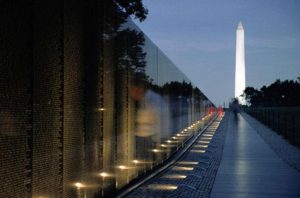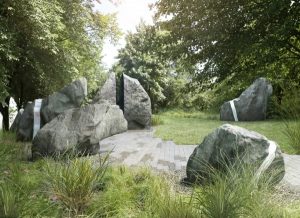
Constructing memorials requires a specialized approach that takes into consideration the highly sensitive nature of building spaces to honor lives lost, preserve memory, and mark major historical events. Gilbane and its team of experts have had the privilege of being part of building some of our nation’s most enduring memorials including the World War II Memorial, the Vietnam Veterans Memorial, and more recently, the LGBT Memorial in New York City honoring those killed in the 2016 Pulse nightclub shooting in Orlando and the Dwight D. Eisenhower Memorial expected to open in May 2020. Through these experiences, we have compiled best practices that help contribute to the successful construction of lasting memorials.
Some key principles to consider include:
Respect and Commitment Above All Else
From the outset, a memorial project requires that every team member – including project partners and trade contractors – have a deep respect for and commitment to the project mission. This dedication has to be a foundational element for the working relationship of the building team because it will support strong collaboration and commitment to overcome project challenges that may arise. Posting a memorial mission statement in the field office or at strategic locations on-site and the creation of commemorative hard hat stickers are examples of simple ways to help reinforce the project’s importance. Pre-bid conferences and contractor information sessions can provide an overview of the memorial’s mission and history in order to reinforce the sensitivity and respect that is expected of those working on the project. Similarly, toolbox talks can be used to help educate and promote a greater connection to the memorial mission among workers. If the project is located at a site of memory, sensitivity on the construction site is paramount.
Supporting Commemoration throughout Construction

Memorials built in proximity to the events that they are commemorating may seek to accommodate those wishing to visit the site to memorialize and feel a connection to what happened, even while construction is taking place. These memorial sites are often places where public gatherings, spontaneous tributes, commemoration, and meaning-making occur long before the memorial itself is constructed.
To that end, a dedicated and safe space near to or on the site can be designated to accommodate memorial stakeholders or members of the public wishing to commemorate and leave tributes. This ensures that those seeking to remember loved ones or those hoping to express solidarity can visit the site safely. The construction team may work with memorial planners to devise procedures and systems to collect and record tributes which convey expressions of heartfelt mourning.
Safety and Security
Public safety and maintaining a secure site are always top priorities for any construction project. For memorial project sites, even greater attention must be placed on maintaining safety and security. Given the high-profile nature of such projects, a comprehensive security plan must be an integral part of any overall project plan and the specified security protocols must be adhered to by everyone on-site. The development of a clearly written scope of security procedures prior to bidding can help ensure the trades understand and are prepared to adhere to the project’s security measures.
Keeping Stakeholders Informed of Progress
Working with memorial designers and planners, the construction team should create and deliver a schedule that includes updates

which inform key stakeholders of progress and milestones. Memorial projects often involve stakeholders with deeply personal ties to the project. Accordingly, these stakeholders may require special outreach and information sharing related to the project. Effective and continuous communication throughout the project helps maintain awareness about activities on the site and serves to keep stakeholders apprised and engaged as the project moves forward.
Thoughtful Material Selection
Memorials are intended to be enduring markers of memory and tribute. The construction team can work with designers and planners to help select materials that are durable, maintainable and operationally efficient. These materials can have a major impact on the public’s experience interacting with the memorial as well as the operations plan to maintain the memorial once it is complete and open. In order to ensure the highest quality in construction of selected materials and systems, a series of mockups, benchmarks and prefabrication meetings is highly recommended. The careful selection of vendors, material suppliers and craftsmen is also a critical component in providing the highest quality workmanship possible.
It is an honor and a privilege to be part of paying tribute and honoring history through the construction of a memorial. A respectful, committed, thoughtful and collaborative building approach will help ensure that a memorial is built to endure for generations to come.

